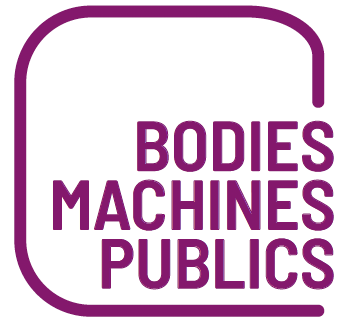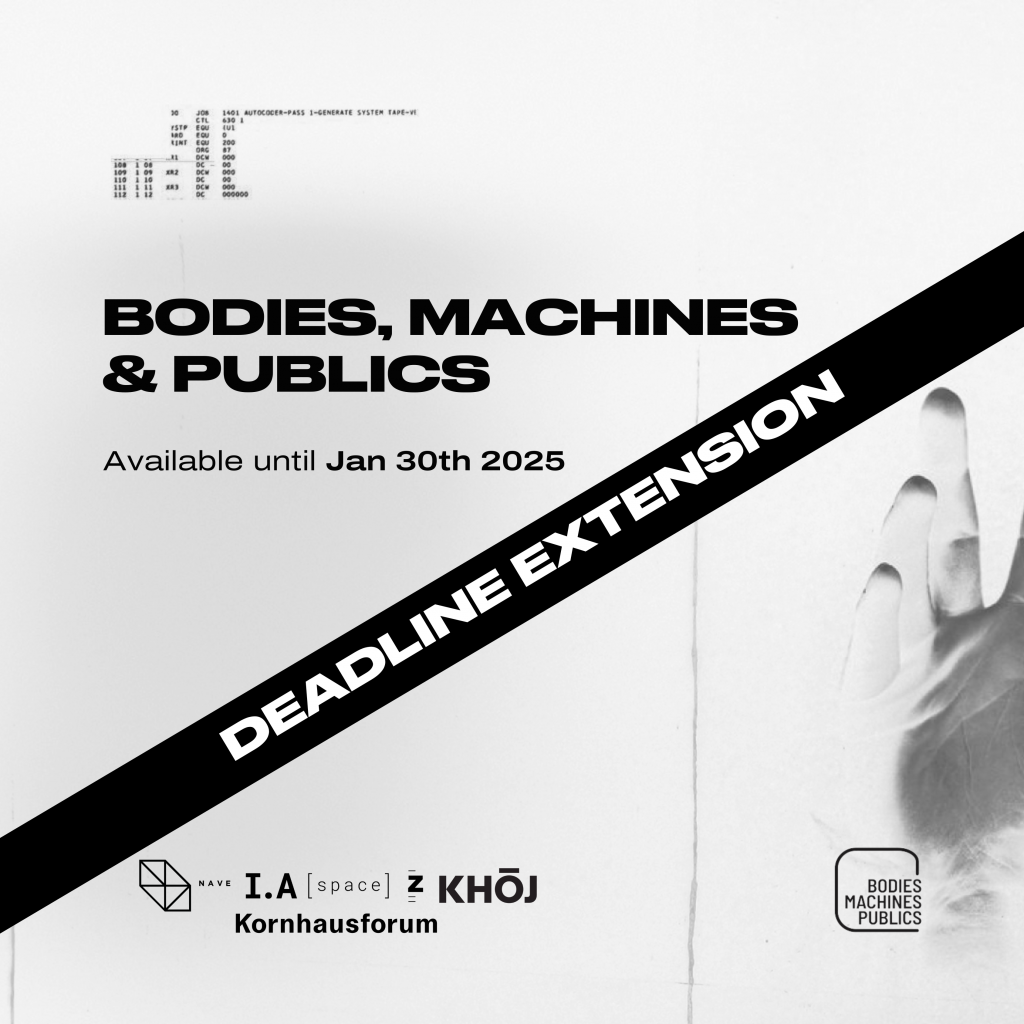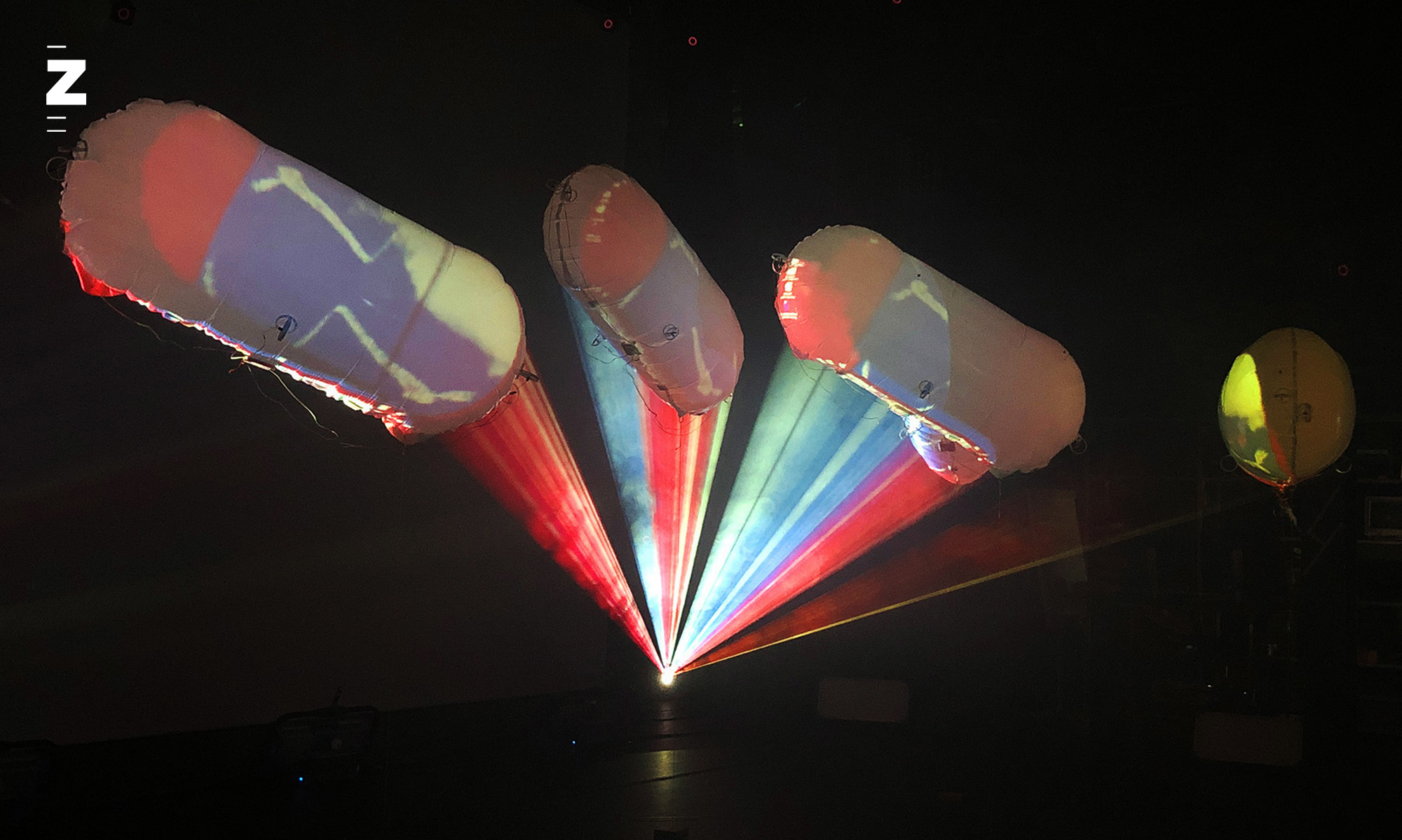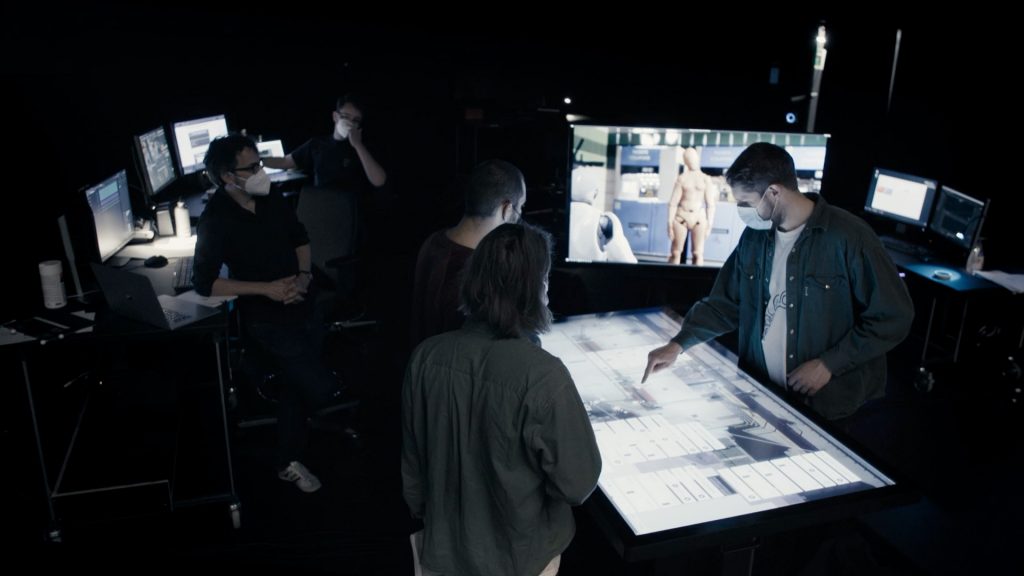A glocal network exploring bodies in the age of computer mediated reality

BODIES-MACHINES-PUBLICS brings together a “glocal” (global and local) network of cultural and research partners in Switzerland, India and Chile that seek to provide time and space for artists to develop prototypes and works exploring the sensitive body and technical mediation in relation to public space. The project is a two-year collaborative initiative between NAVE (Chile), KHOJ Studios (India), Immersive Arts Space/ZHdK (Zurich, Switzerland) and Kornhausforum (Bern, Switzerland) and is supported by the Pro Helvetia Synergies Program.
People increasingly interact with technologies such as wearable sensors, VR/AR headsets or other data gathering systems on an intimate, bodily level which successfully blurs the lines between the physical and the digital; the body and its interaction with its environment. At the same time, the involuntary data collection and machine-led decisions that arise from these sensing technologies exacerbates historical inequalities, particularly affecting marginalized groups. Addressing the capture of human motion, thoughts and experience through new technologies is therefore an ongoing challenge that requires new kinds of creative and imaginative practices.
Residency 2025
Open Call for Residency at Immersive Arts Space and Kornhausforum
BODIES-MACHINES-PUBLICS invites Indian and Swiss visual, performing and media artists, designers, architects or researchers working between art, technology and science to apply for a shared residency at the Immersive Arts Space and Kornhausforum Bern in Switzerland. Artists can apply through an open call until 13th April 2025. The residency will last four weeks, two weeks in each institution (Immersive Arts Space and Kornhausforum) between 8th September to 5th October 2025. The aim of the residency is to develop prototypes and works that can be publicly exhibited.
The deadline for application has ended.
Open Call for Residency at NAVE

Residency 2024
The project starts this year with the combined residencies at the Immersive Arts Space and Kornhausforum. The two part residency starts on 9th September at the IAS and moves then into the Kornhausforum until 5th October 2024, where there will be a public presentation of the projects. Two artists – one from Switzerland, and another one from Chile – will share the spaces and work on their projects with the aim to exchange artistically as well as culturally.
The Swiss artist is Ludovica Galleani d`Agliano, who graduated in 2023 from Interaction Design (ZHdK) with her project Syntia_CAM. In the month long residency she aims on developing Syntia_CAM into a live performance and therefore interactive installation between the main characters and audiences.
Javier Muñoz Bravo is a composer within the field of instrumental and electronic music. Javier was trained at The University of Chile (Santiago) and Institut de recherche et coordination acoustique/musique (Ircam) in Paris. Today, Javier is based in Paris and works together with choreographer Stefanie Inhelder and the cie glitch company creating immersive dance performances. During the residency the duo will develop Une saison en métavers – an immersive piece, with a female singer in combination with AI driven visuals, motion capture and live electronics.
https://javiermunozbravo.com/


